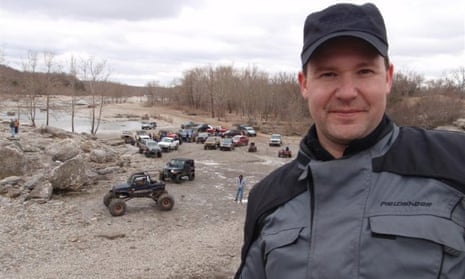The first known death caused by a self-driving car was disclosed by Tesla Motors on Thursday, a development that is sure to cause consumers to second-guess the trust they put in the booming autonomous vehicle industry.
The 7 May accident occurred in Williston, Florida, after the driver, Joshua Brown, 40, of Ohio put his Model S into Tesla’s autopilot mode, which is able to control the car during highway driving.
Against a bright spring sky, the car’s sensors system failed to distinguish a large white 18-wheel truck and trailer crossing the highway, Tesla said. The car attempted to drive full speed under the trailer, “with the bottom of the trailer impacting the windshield of the Model S”, Tesla said in a blogpost.
A police report in the Levy County Journal said the top of the vehicle “was torn off by the force of the collision”. The truck driver, Frank Baressi, 62, of Tampa, Florida, was uninjured, the Journal reported.
America’s National Highway Traffic Safety Administration (NHTSA) has opened an inquiry into the accident.
Brown owned a technology company called Nexu Innovations and was a Tesla enthusiast who posted videos of his car on autopilot on YouTube. One video showed his car avoiding a collision on a highway, racking up 1m views after it was tweeted by Tesla CEO Elon Musk.
Owner video of Autopilot steering to avoid collision with a truckhttps://t.co/FZUAXSjlR7
— Elon Musk (@elonmusk) April 17, 2016
In its 537-word statement on the incident, the electric vehicle company repeatedly went out of its way to shift blame for the accident. The first paragraph notes that this was Tesla’s first known autopilot death in some 130 million miles driven by its customers. “Among all vehicles in the US, there is a fatality every 94 million miles,” the company then notes.
It goes on to say that the car’s autonomous software is designed to nudge consumers to keep their hands on the wheels to make sure they’re paying attention. “Autopilot is getting better all the time, but it is not perfect and still requires the driver to remain alert,” the company said.
At the end of its blogpost, Tesla stated: “The customer who died in this crash had a loving family and we are beyond saddened by their loss,” the company said. “He was a friend to Tesla and the broader [electric vehicle] community, a person who spent his life focused on innovation and the promise of technology and who believed strongly in Tesla’s mission.”
Our condolences for the tragic loss https://t.co/zI2100zEGL
— Elon Musk (@elonmusk) June 30, 2016
“Preliminary reports indicate the vehicle crash occurred when a tractor-trailer made a left turn in front of the Tesla at an intersection on a non-controlled access highway. The driver of the Tesla died due to injuries sustained in the crash,” the NHTSA said.
The car continued to travel after passing under the truck’s trailer, veered off the road, and then crashed through two fences and into a power pole, the local police report said. Brown died at the scene.
The accident comes at a time when Americans have just started to become more comfortable with letting machines take the wheel. Tesla has generated enormous fanfare with its autopilot mode and inspired consumers – despite the company’s warnings – to see just how much they can do while letting the car drive.
A popular video posted online appeared to show a man taking a nap as his car navigated busy traffic. One member of a Tesla owner message board recently quipped that he uses his free hands to play air guitar to Billy Idol songs. Another claimed that during a road trip, he noticed Tesla’s autopilot camera struggling to pick out lines during bright sunlight in the morning or at dusk.
Other carmakers have said they will be releasing autonomous vehicles in the near future. Within a year, General Motors plans to test self-driving taxis with the ride-hailing app Lyft. One startup backed by Google is testing completely autonomous trucks in Nevada that will let drivers rest as they complete cross-country shipping routes.
Musk recently hinted that the company plans to include its autopilot feature in its upcoming Model 3, which at $35,000 is being marketed to middle-class drivers.
The appeal of the technology is obvious. And Tesla isn’t wrong when it says that statistically, vehicles driving themselves have a much better safety record than ones driven by humans.
But the Tesla accident offers the first test of how consumers will react when reminded that they are putting their lives in the hands of computer code when they turn over control of the wheel.
Brown, for his part, appeared to believe that he was safe when letting go of the wheel. In one of the YouTube videos he posted of his Model S driving itself in slow-moving traffic, he said, “It takes all the stress out of it.”
“You get to your destination slightly slower but at least now you don’t have to worry about anything. Just let it go.”
